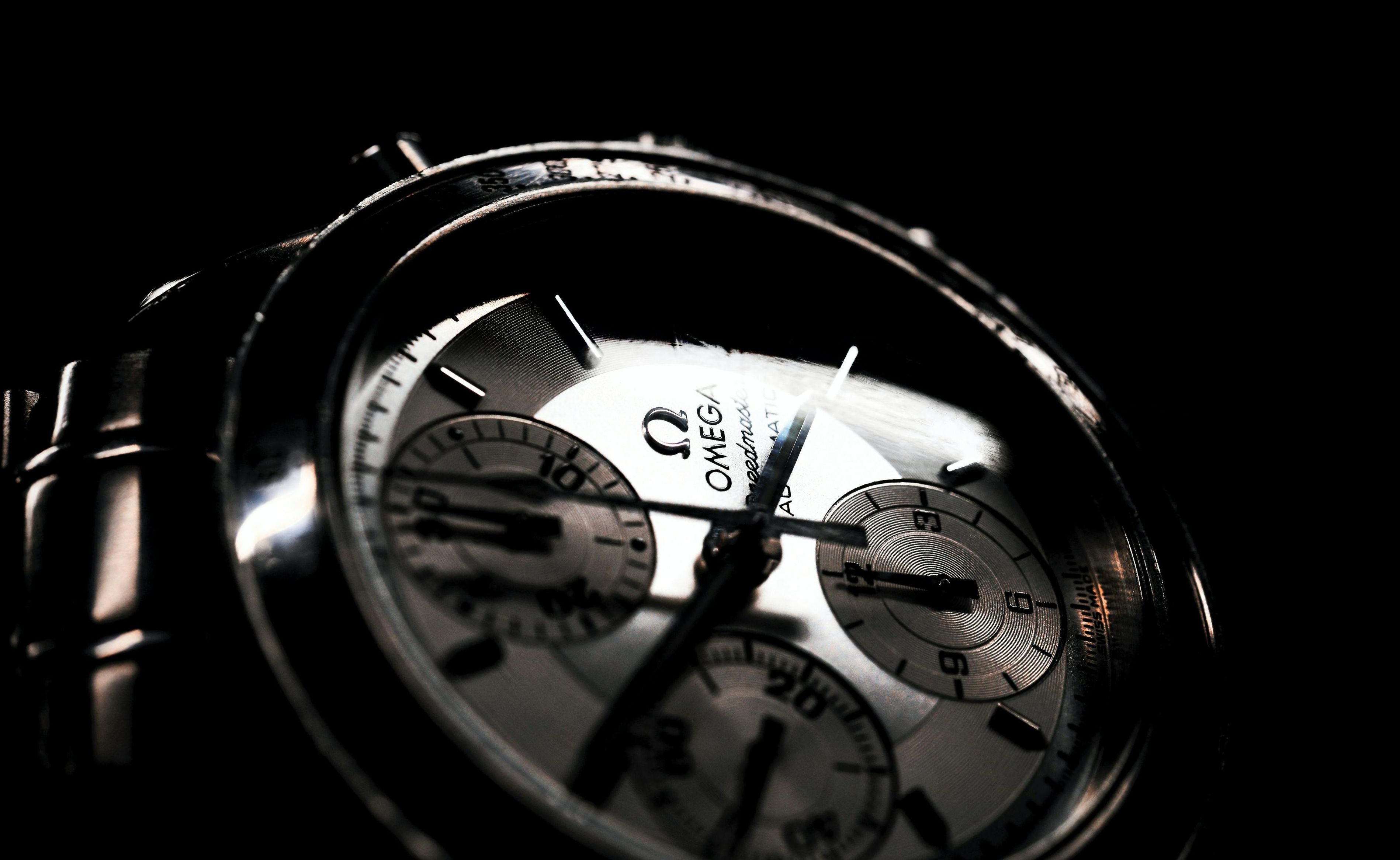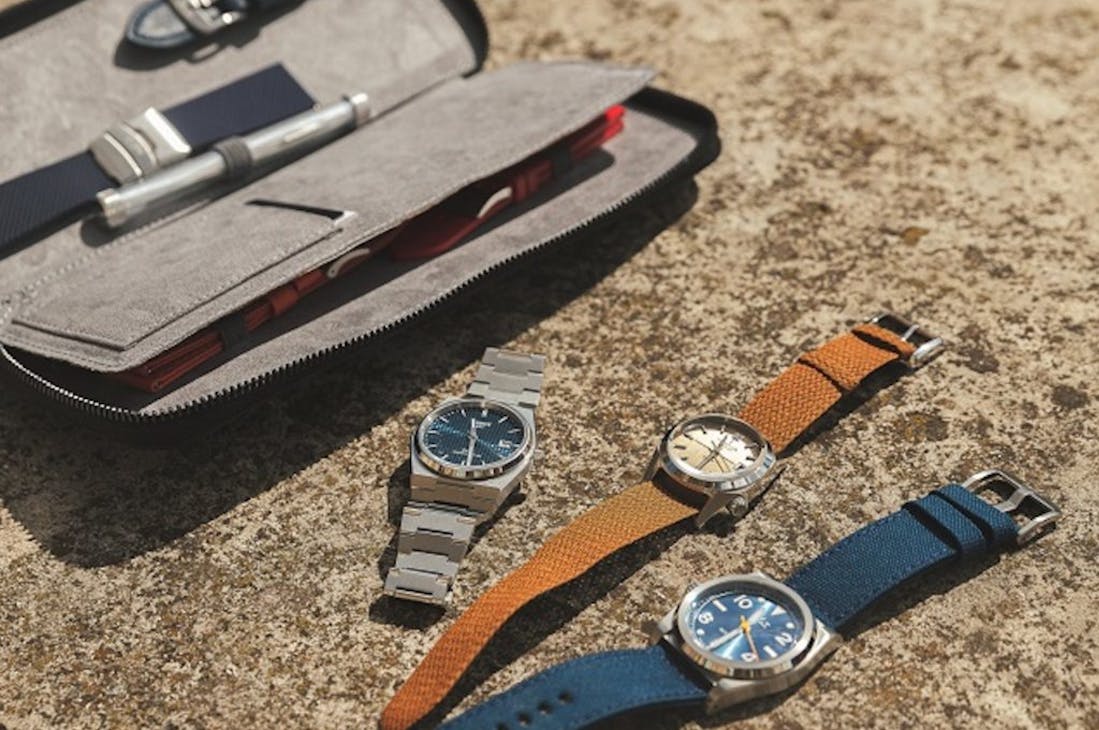Here is a new forum open to a reader, this time on a subject that we know little about: watchmaking. Luc being a watchmaker: you will be in good hands! To find out our opinion on 50 watch brands, click here .
FIRST, A LITTLE BASIC VOCABULARY

1 - Bracelet (here in leather)
2 - Horn (allows the bracelet to be attached)
3 - Round shaped housing . They come in all shapes (square, triangular, etc.) and in all materials (plastic, gold, platinum, aluminum, etc.)
4 - Crown (allows setting the time, date, winding)
5 - Index (the numbers 1, 2, 3… and the graduations)
6 - The name of the brand , the logo
7 - The small seconds (you can find a central seconds otherwise)
8 - Blued hands
9, 10 and 11: Complications : information given by the watch other than the time
- 9 - Date (date)
- 10 - Power reserve (how much time remains before the watch needs to be wound)
- 11 - Phases of the moon
12 - Dial (plate on which we find the patterns; below is the movement, the “motor” of the watch)
WHICH WATCH TO CHOOSE?
There are 2 types of watches: “mechanical” or “quartz”
MECHANICAL WATCHES
Mechanical watches suffer from an image of “grandfather’s watch” among the general public. And yet, we find many innovative designs among this type of watch (sometimes even too futuristic). However, to have quality, you absolutely must aim for the high end.
So no more mechanical watches from Russia, Eastern Europe or elsewhere! In fact, they are made with poor quality steel and the design means that the parts do not mesh well with each other... They will break very quickly and will sometimes be irreparable.
Today, buying a quality mechanical watch that will give you style requires a high budget: more than a thousand euros... to purchase. Indeed, maintenance must also be taken into account: a complete overhaul every 3 to 5 years maximum, i.e. from €500 to €5,000 (or even more) at the high end. And I'm not even talking about the waiting times which can be very long.
This is not necessarily valid for vintage, but you need to have a little knowledge and passion to recognize good deals. This is also not valid for the few watches containing ETA movements (ETA is a company that produces watch components and movements), which have the advantage of sometimes having a nice design and always Swiss quality mechanics, for €150-500.
I will immediately make a digression about high-end watches which are sold like hotcakes: certain luxury brands sell more than a million watches per year in the world... I doubt it - but that's just one personal opinion — that having such a watch on your wrist, despite its generally high price, can allow you to really assert your personality and your originality.
Lange und Söhne movements, very good German brand, you will notice the finishes
Among mechanical watches, there are also manual-winding watches and automatic watches.
- An automatic watch is equipped with a set of parts called an “automatic module” which allows the watch to be wound (“to restore energy to the motor”) according to the movements of the wrist during the day. You put your watch down before going to bed, and normally, you pick it up again the next morning and it still works. No need to wind it unless you have not worn it for a few hours/days (depending on the power reserve of the watch). So you have to move for it to work!
- A hand-wound watch must be wound daily to work. Simply turn the crown (it takes less than a minute in the morning and evening) to energize the watch.
An automatic watch therefore offers an undeniable advantage and comfort of use for not much more than a manually wound watch.
QUARTZ (OR “BATTERY-POWERED”) WATCHES
Quartz watches have a significant advantage over mechanical watches: they are ultra precise . The quartz movement, even Chinese for less than €10, remains more precise than the high-end movement at €50,000.
Another positive point: we find decent ones in all ranges: from €50 to €500, you have a really wide range of choices. The budget is therefore more affordable and the maintenance consists of a simple battery change which will cost you €10 (we sometimes change the entire movement, which then costs from €20 to €100). Be careful, at the top of the range you will be charged for a complete overhaul, so count on at least €300, or even much more.
Tomorrow on the blog, the continuation of Luc's watch file, with the theme: what style of watch to choose ?
WHAT STYLE OF WATCH TO CHOOSE?
FIRST: TRY THE WATCH IN REAL
The golden rule to follow is simple (and it's the same as for glasses): you have to see AND try the watch in real life! No purchase on the internet without having tried the watch, it's really important!
For what ? Because even if you have all the technical information, a photo or a 3D image is not worth the reality. The materials take and reflect light, there are material effects... like a piece of clothing.

The proof in images: on the left, a retouched photo or a 3D rendering; on the right, a photo taken in a living room. In both cases, it is the Flyback Chronograph 1815 from A. Lange & Söhne (€25,000).
I am unable to give you tips for finding THE watch (because it depends on your personality, your tastes, your social environment, etc.) but I can nevertheless give you tips for avoiding certain watches. As with clothing, I use the basic matrix: size, material, design (equivalent to fit, material, cut).
THE SIZE OF THE WATCH
The watch must be proportional to your wrist. There, beyond the measurements given in millimeters, it is also a question of feeling . Hence the interest in trying it before buying it. You should absolutely avoid tiny watches that make your wrist look feminine and watches that are too large whose lugs protrude from your wrist.
We really need to ban watches that are too big ! (even if we do more and more today…) We see that that is simply ugly. Small reminder: the watch must not stand out to others, it must remain discreet!
In the same spirit: no crown or huge push buttons on the sides , it's a total absence of finesse and elegance (be sure to see if you can handle them, in general we catch by the underside with the nail then pull).
A bracelet is your size when you can fit your index finger between your wrist and the bracelet, and nothing more (except for diving or sports watches, they are tight against the suit).

Stowa Antea on the left, Stowa Pflieger on the right (around €600).
THE MATERIALS
For the bracelet: avoid plastic at all costs. It’s cheap, it ages badly…
Favor leather or steel (steel links can pull and tear out hairs, however). Even gold, platinum, etc. Aluminum has a good lightness/strength ratio. Warning: if you have an allergy or your skin rusts, avoid the materials concerned.
There are also so-called “NATO” bracelets which have a military origin. They are extremely resistant, comfortable and hypoallergenic. They have a sporty connotation and bring an undeniable touch of relaxation (which can give an interesting contrast).

Small budgets: Seiko Military with a Nato (less than €100).
For the case: they are often plated or rhodium-plated (a thin layer of gold, rhodium or other has been applied to the base material for aesthetic and/or technical reasons). If you have a plated watch, notify the watchmaker before he repairs it... If he polishes it to remove a scratch, it's a bad surprise!
For the glass: they are often made of plexi (we find “sapphire” glasses for the high end). There are also “unscratchable” ones. Small scratches are removed by polishing, otherwise you can also change the glass.

Omega Speedmaster 861 with a NATO strap (€2,200 used).
WHICH WATCH DESIGN TO CHOOSE?
Overall, you should avoid overly futuristic watches with digital displays which are more reserved for teenagers or athletes.
CRITERIA TO TAKE INTO ACCOUNT
- Bracelet: not too futuristic, not too imposing in relation to the watch, comfortable, easy and secure opening and closing.
- The horns: no too original shapes, they must be consistent with the case.
- The case, the crown, the pushers: not too original shapes, not too big.
- The glass: avoid using a magnifying glass on the glass to be able to read the date.
- The dial: not too busy (even if it's a chronograph with 3 counters!), avoid flashy colors, if you want a white dial: avoid the white fridge door (an off-white/beige/cream is still better ), avoid overly imposing brand logos.
- The needles: not too big! Not too much luminova (fluorescent luminous paste), no needle-like patterns in the shape of hearts, spades, etc. The blued hands look great (I think). No digital display.
- The indexes, the numbers: not too big, you don't do an eye test by reading the time on your watch.
- Apertures and counters (which allow you to read the date, seconds, etc.): avoid those which are too marked and which break the harmony of the dial, avoid having lots of them everywhere (and then, too much information kills info).
- The back : it can be glazed to see the movement and the mechanics.
WHAT YOU SHOULD NEVER DO!
- Wash your hands, shower, wash the dishes with your watch (hot soapy water arriving in the form of a jet damages the joints).
- Use your watch for everything and anything (for sports and DIY, buy another watch (futuristic with a digital display if you want, there you can ^^).
- Not having read the instructions for your watch and believing that it does not work or works poorly when it works normally.
- Change the date between -3 hours and +3 hours the normal date change (if your watch changes the date to midnight, do not change the date manually between 9 p.m. and 3 a.m.), otherwise you will break a part inside and the date will still work but not all the time. This is of course not valid for electronic digital watches…

Another Seiko watch, submariner model.
HOW DO I CHOOSE MY WATCH THEN?
There are many watch brands (infinitely more than the general public generally imagines). So to find THE watch in this jungle of choices, I offer you a little method (it's just an example eh!):
- If you really don't know where to start : watch the ads for different brands and talk to anyone about the subject (friends, family, colleagues, etc.). This allows you to discover the world of brands.

Patek Philippe does not operate in the same universe as Tag Heuer, for example.
- Make a photo spread with a few watch models that you like and don't like, and know how to explain in a few words why.
- Go to a watchmaker or a watch store (Galeries Lafayettes Paris has the advantage of bringing together many brands on one level, this already allows you to get ideas). Don't hesitate to really go to all possible places, you are sometimes pleasantly surprised!
- Talk to the watchmaker or salespeople and try on models , note the references of those you like. Ask if there are second-hand models or end of stocks, again you are sometimes pleasantly surprised.
- Take the time to make your choice (see the list of criteria). There's no rush, you can always find out the time another way while you wait. Don't forget that it's an accessory that can perfect or demolish your entire style! 😉















HOW TO CHOOSE YOUR WATCH?
We sometimes hear that “the watch is man’s only jewel”.
It is true that the watch is a strong accessory in an outfit: it can perfect the latter as well as demolish all the elegance that you have tried so hard to build... The watch must therefore be chosen with care, otherwise it is better not to not wear one!
It must signify your personality, beyond the notions of good or bad taste: you must like it . It's a bit like choosing a perfume : it should not be an object that "must" be put on your wrist to complete your outfit but, on the contrary, it should integrate into your look as if it were part of you .
When someone sees you, it's not the thing they should see first . But it is a detail that must be noted and which must bring a positive note. It seems that women (and men too) pay particular attention to this accessory/jewelry because it allows them to better understand the personality and social status of their interlocutor.